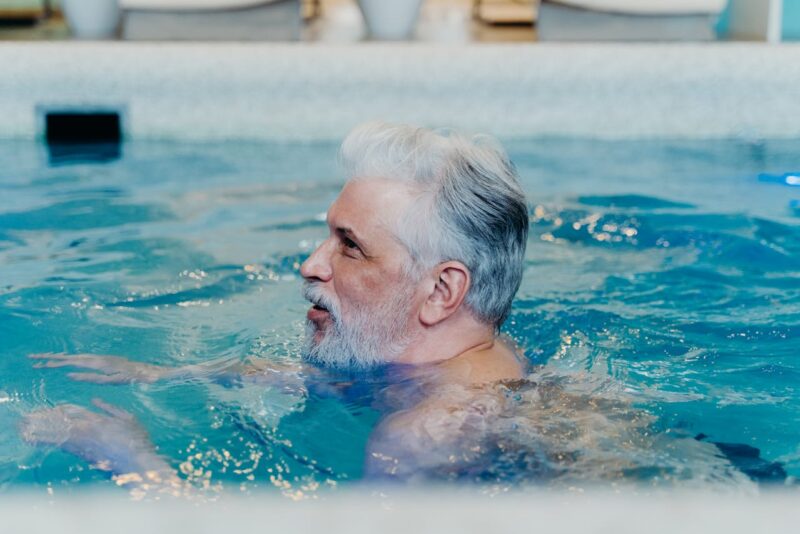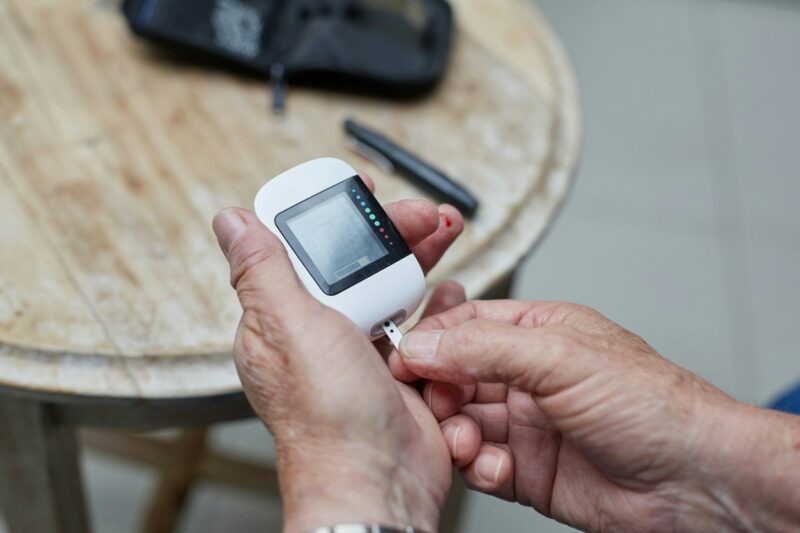
When it comes to swimming safety for seniors, taking precautions is paramount. From understanding the importance of supervision to knowing how to recognize the signs of fatigue, there are key steps seniors can take to enjoy the water safely. Stay tuned to discover how simple measures can make a big difference in promoting water safety and well-being for seniors.
Understanding Swimming Safety
Importance of Water Safety Rules
Seniors must adhere to water safety rules to prevent accidents while swimming. Taking precautions can significantly reduce the risk of injuries or drowning incidents.
Common Risk Factors
Older adults face various risk factors when swimming, including reduced strength, balance issues, and medical conditions like heart problems. These factors increase the likelihood of accidents in water.
Significance of Supervision and Precautions
Supervision plays a crucial role in ensuring seniors’ safety while swimming. Having someone present to assist in emergencies can prevent dangerous situations. Taking precautions, such as using flotation devices and staying within designated areas, is essential for preventing accidents.
Health Benefits
Swimming regularly enhances overall health by improving cardiovascular fitness and muscle strength. It also aids in maintaining a healthy weight and reducing the risk of chronic illnesses.
Engaging in water aerobics classes offers seniors a fun and social way to stay active while benefiting from the low-impact exercise that water provides. This form of exercise can improve flexibility, balance, and endurance.
Aquatic therapy is a beneficial option for seniors experiencing joint pain. The buoyancy of water reduces stress on joints, making movements easier and less painful. This therapy can help seniors manage conditions like arthritis effectively.
Learning to Swim
Benefits
Learning basic swimming skills offers seniors numerous benefits, including improved cardiovascular health and overall fitness. Swimming is a low-impact exercise that helps in maintaining muscle strength and joint flexibility, crucial for aging bodies.
Engaging in water aerobics classes offers seniors a fun and social way to stay active while benefiting from the low-impact exercise that water provides. This form of exercise can improve flexibility, balance, and endurance.
Aquatic therapy is a beneficial option for seniors experiencing joint pain. The buoyancy of water reduces stress on joints, making movements easier and less painful. This therapy can help seniors manage conditions like arthritis effectively.
Training Programs
Various swimming training programs are available for older adults to enhance their skills. These programs cater to seniors’ needs by focusing on water safety, stroke techniques, and building endurance. Participating in these programs can boost seniors’ confidence in the water.
Preparing the Pool Area
Safety Features
Ensure the pool area is equipped with essential safety features to prevent accidents and injuries. Consider installing a fence around the pool to restrict access and reduce the risk of falls.
Make sure there are adequate safety signs placed prominently, indicating pool rules and emergency contact information. These signs can serve as reminders for seniors and other swimmers to follow safety protocols.
Lighting and Surfaces
Check that the pool area has sufficient lighting, especially if seniors swim during early morning or evening hours. Proper lighting helps seniors see clearly and navigate around the pool area safely.
Ensure that all surfaces around the pool are non-slip to prevent slips and falls. Use slip-resistant mats or coatings to enhance traction on wet surfaces, reducing the chances of accidents.
Accessibility Aids
Install grab-bars and handrails along the poolside for seniors to hold onto while entering or exiting the pool. These aids provide stability and support, making it easier for seniors to move in and out of the water safely.
Consider adding a sturdy pool ladder with handrails for additional support when seniors need to climb in or out of the pool. The ladder should be securely anchored to prevent wobbling or instability.
Choosing the Right Gear
Swim Gear
Seniors should opt for appropriate swim gear that enhances their safety and comfort in the water. Look for swimsuits that provide good coverage and a secure fit to prevent any wardrobe malfunctions during swimming sessions.
Invest in quality life jackets or personal flotation devices (PFDs) specifically designed for seniors. These items offer additional support and buoyancy, reducing the risk of accidents or fatigue while swimming.
Thermal Protection Buoyant Suits
Consider using thermal protection buoyant suits for added safety, especially when swimming in cold water. These suits not only keep seniors warm but also provide extra buoyancy, aiding in staying afloat effortlessly.
Staying Alert in the Water
Stay Vigilant
Seniors should always stay vigilant and aware of their surroundings while swimming to ensure their safety. By remaining alert, they can quickly respond to any potential dangers or emergencies that may arise in the water.
Pool Depth Awareness
Be mindful of pool depth markers, especially for seniors who may have vision impairments. Understanding the pool’s depth is essential for safe diving practices.
Avoid High-Risk Situations
It is crucial for seniors to avoid high-risk cold-water situations, especially when swimming alone. Cold water can pose significant risks to older individuals, such as hypothermia or muscle cramps, making it essential to exercise caution.
Be Cautious of Changing Weather Conditions
Seniors must be cautious of changing weather conditions that could impact water safety. Sudden changes in weather, such as storms or strong winds, can create hazardous swimming conditions. Being aware of these changes can help seniors make informed decisions about their swimming activities.
Managing Health Conditions
Monitor Health Regularly
Seniors engaging in swimming activities should monitor their health regularly to ensure they are fit for water activities. Regular check-ups can help detect any underlying health issues that may pose risks during swimming sessions.
Maintaining a healthy lifestyle through proper diet and exercise can significantly impact seniors’ overall well-being, enhancing their ability to enjoy swimming safely. By staying active and eating nutritious meals, seniors can improve their cardiovascular health and reduce the risk of accidents in the water.
Consult Healthcare Professionals
Before diving into swimming routines, seniors must consult with their healthcare professionals to discuss the potential effects of medications on their swimming abilities. Certain medications may cause dizziness or affect balance, increasing the risk of accidents while in the water.
Healthcare providers can offer valuable insights into how specific medications interact with physical activities like swimming. By seeking professional advice, seniors can better understand how to manage their medications and stay safe during aquatic exercises.
Addressing Health Concerns
Seniors should be proactive in addressing any health concerns that could impact their participation in water activities. Whether it’s managing chronic conditions like arthritis or hypertension, taking necessary precautions can help prevent injuries or accidents while swimming.
Maintaining Proper Hydration
Stay Hydrated
Seniors should prioritize staying hydrated before, during, and after swimming to prevent dehydration-related issues. Dehydration can lead to fatigue, muscle cramps, and dizziness, affecting overall swimming performance.
It’s essential for seniors to drink water regularly throughout the day, not just when they feel thirsty. Bringing a water bottle to the poolside ensures easy access to fluids before and after swimming sessions.
Electrolyte Balance
Maintaining electrolyte balance is crucial for seniors engaging in swimming activities. Electrolytes like sodium, potassium, and magnesium play a vital role in muscle function and hydration levels.
Consuming foods rich in electrolytes, such as bananas, nuts, and leafy greens, can help seniors maintain a healthy balance while swimming. Electrolyte drinks can also be beneficial for replenishing lost minerals post-swim.
Alcohol Consumption
Seniors should avoid excessive alcohol consumption before swimming to ensure their safety in the water. Alcohol can impair coordination and judgment, increasing the risk of accidents while swimming.
Alcohol acts as a diuretic, leading to increased urine production and dehydration. This can be dangerous for seniors, especially during physical activities like swimming where proper hydration is essential.
Closing Thoughts
By understanding swimming safety, learning to swim, preparing the pool area, choosing the right gear, staying alert in the water, managing health conditions, and maintaining proper hydration, you can enjoy swimming safely as a senior. Prioritizing these aspects will not only enhance your swimming experience but also contribute to your overall well-being. Remember, safety should always come first when you’re in or around the water.
Now that you have the knowledge and tools to practice safe swimming habits, it’s time to take action. Incorporate these tips into your routine, stay vigilant about safety measures, and enjoy the many benefits that swimming can offer you. Stay safe and have fun in the water!
Frequently Asked Questions
Is swimming a safe exercise for seniors?
Swimming is a safe exercise for seniors as it is low-impact, gentle on joints, and helps improve cardiovascular health without putting excessive strain on the body.
How can seniors ensure their safety while swimming?
Seniors can ensure their safety by learning to swim, preparing the pool area to prevent accidents, choosing appropriate swim gear, staying alert in the water, managing health conditions, and maintaining proper hydration.
How does proper hydration contribute to swimming safety for seniors?
Proper hydration is essential for seniors’ swimming safety as it helps maintain optimal body function during exercise, prevents dehydration-related issues such as muscle cramps or fatigue, and supports overall well-being while engaging in physical activities like swimming.
What are the benefits of installing pool railings and grab bars for seniors?
Installing pool railings and grab bars provides seniors with additional support and stability when entering or exiting the pool. This helps prevent slips and falls, reducing the risk of accidents and injuries during swimming sessions.



